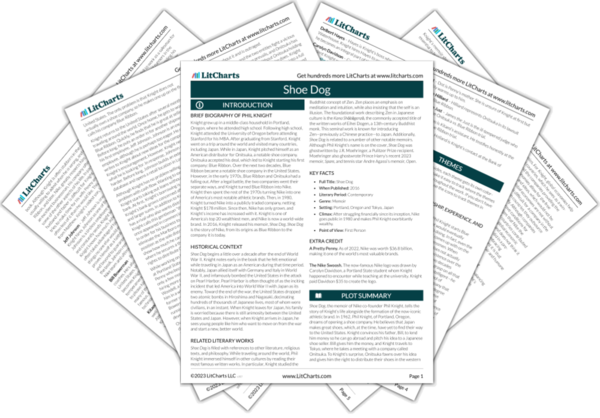Entrepreneurship, Experience, and Perseverance
When Nike co-founder Phil Knight starts Blue Ribbon—the company that would eventually become Nike—he has no idea what he is doing. In fact, even the name “Blue Ribbon” is something Knight comes up with on the fly while in a meeting with Japanese businessmen. When Knight first utters the name, the company does not actually exist—rather, it is something he brings into existence over the course of the book. Throughout the roughly two decades Knight’s…
read analysis of Entrepreneurship, Experience, and PerseveranceLeadership
Leadership is an important quality for businessowners to possess, especially if they are running a business as large as Nike. But leadership something that does not come easy to Phil Knight in Shoe Dog, and he often wonders whether he is an effective leader, especially early in his company’s existence. When Knight starts Blue Ribbon, he employs Jeff Johnson, a man more dedicated to Knight than Knight is to him. Johnson constantly updates…
read analysis of LeadershipGlobal Economies
Shoe Dog opens roughly a little over a decade after the end of World War II. Toward the end of the conflict, the U.S. infamously fought against and dropped nuclear weapons on Japan, which was allied with Germany. After the war, Japan—which previously practiced isolationist policies—began opening up its economy to the world. Although global economies were hardly a new phenomenon in the 1950s and 1960s, such economies grew rapidly in the second half of…
read analysis of Global Economies
Balancing Family and Work
Throughout Shoe Dog, Knight has trouble balancing his home life with his work life. At first, Knight’s family life and his work life largely overlap—his wife, Peggy, works for him, so they see each other regularly. However, when Peggy gets pregnant and gives birth to the couple’s first son, Matthew, things get more complicated. Knight loves Peggy and Matthew, but he always finds himself forced to choose between spending time with them…
read analysis of Balancing Family and Work






